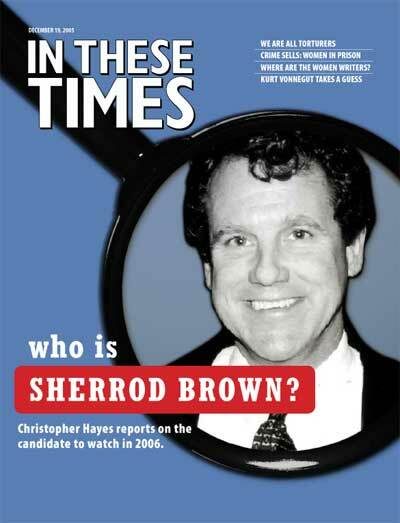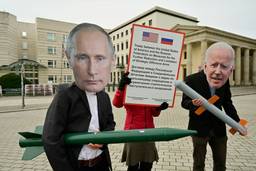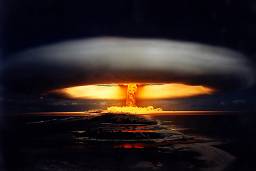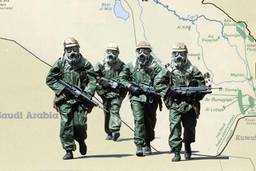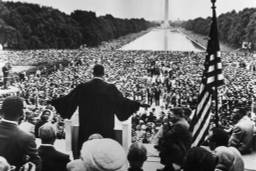White Phosphorous Lies
Did the Pentagon use chemical weapons indiscriminately in Fallujah?
Frida Berrigan
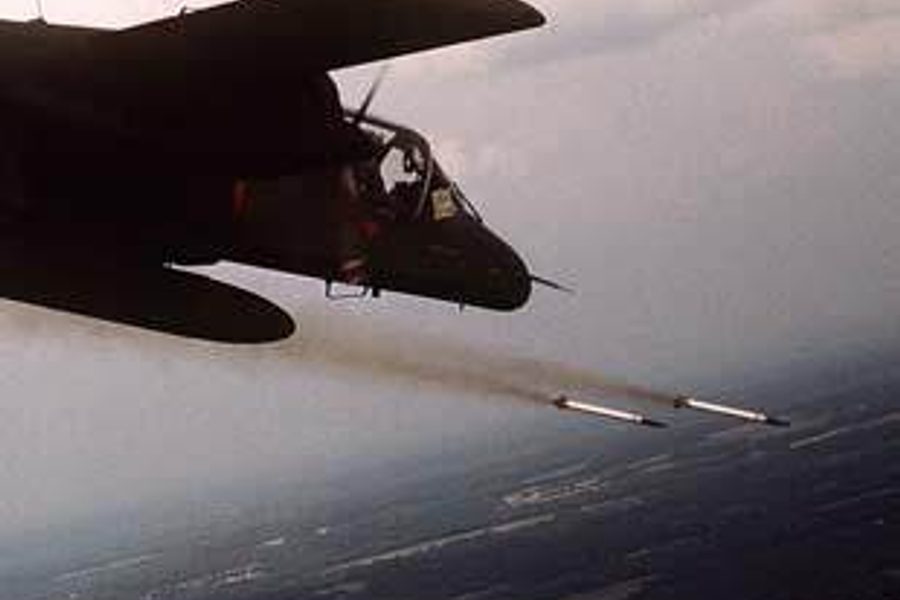
Just when it seemed the Iraq war couldn’t get worse, the United States admitted on November 16 that forces in Fallujah did use white phosphorus (WP) as an incendiary weapon against enemy combatants. However, the Pentagon continues to deny that soldiers used WP – a “spontaneously flammable” and “extremely toxic inorganic substance,” according to the Army Center for Health Promotion and Preventative Medicine – against civilians.
This admission, a reversal of the military’s previous denials that the substance was used as a weapon at all, came after protests at the U.S. embassy in Rome that were sparked by the airing of Fallujah: The Hidden Massacre, a documentary by Sigfrido Ranucci and Maurizio Torrealta, on Italian television.
In the documentary, Torrealta, a news editor at Italian state media company RAI, interviews U.S. soldiers and Iraqi human rights advocates, and shows pictures of the havoc wreaked by white phosphorus. The film set off a firestorm of controversy about interpretations of the Geneva Convention: When is a device that can indiscriminately burn civilians to death a banned weapon and when is it a defensive mechanism for hiding troop movements? An Army fact sheet admits it is both, noting that while WP “is used primarily as a smoke agent,” it can “also function as an anti-personnel flame compound capable of causing serious burns.”
For Jeff Engelhart, a former Marine with the First Infantry Division that fought the Battle of Fallujah in November 2004, these questions of interpretation are moot. “I do know that white phosphorus was used. White phosphorus kills indiscriminately,” he says in the documentary.
On November 8, U.S. Marine Major Tim Keefe told Reuters that “suggestions that U.S. forces targeted civilians with these weapons are simply wrong.” But there is nothing simple about it.
Protocol III of the 1980 Convention on Conventional Weapons bans the use of incendiary weapons, meaning “any weapon or munition which is primarily designed to set fire to objects or to cause burn injury to persons.” The United States has not signed the protocol. The Pentagon initially denied using WP as a weapon, arguing that while WP could “set fire to objects or cause burn injury to persons,” that is not the task for which the weapon is “primarily designed.” Rather, the military claims that WP – known as “Whiskey Pete,” or “Willy Pete” on the battlefield – is a legitimate tool for obscuring troop actions. Now military sources insist that WP is not a chemical weapon (banned under Geneva Conventions), but a conventional one.
From the military’s own reports, it is clear white phosphorus was used for multiple reasons in Fallujah. In the March/April 2005 issue of Field and Artillery Magazine, Captain James T. Cobb wrote an “after action” review of the November 2004 Battle of Fallujah, a battle he describes as the “most fierce urban fighting for Marines since the Battle of Hue City in Vietnam in 1968.”
Cobb and his co-authors continue, “White phosphorus proved to be an effective and versatile munition,” useful as “a potent psychological weapon against the insurgents … We fired ‘shake and bake’ missions at insurgents, using WP to flush out them out and HE [high explosives] to take them out.”
It is also clear that U.S. Marines fired WP indiscriminately in Fallujah. Darrin Mortenson, a reporter for the San Diego-area North County Times, was embedded with the Camp Pendleton Marines in Fallujah. In an April 11, 2004 article, Mortenson describes a daily pattern that escalated during the Battle of Fallujah. Nicholas Bogert, a 22-year-old mortar team leader, directs his team to fire countless rounds of “shake and bake” into Fallujah neighborhoods, “never knowing what the targets were or what damage the resulting explosions caused.”
In a November 8 interview with “Democracy Now,” Torrealta said that he began his investigation after seeing photographs from the Studies Centre of Human Rights & Democracy in Fallujah, including detailed color images of residents, some dead in their beds, with their clothes largely intact, but their skin melted to the consistency of leather.
In the same program, Lieutenant Colonel Steve Boylan, a spokesman for the U.S. military in Iraq, said that the allegations of WP’s use against civilians was “tantamount to propaganda, falsehood and rumors.”
When asked about the photos of people burned to the bone while their clothing remained untouched, he theorizes that the damage could have been inflicted by a suicide bomber. “That can happen from massive explosions. If you look at the car bombs that the terrorists use today, you have the same effects from car bombs [or] from suicide vests.”
Boylan may assert that the use of WP is legal and worth the price paid by civilians. But James Nachtwey, the award-winning war photographer, wrote in 1985 that if everyone “could see for themselves what white phosphorus does to the face of a child … they would understand that nothing is worth letting things get to the point where that happens to even one person, let alone thousands.”
Frida Berrigan writes for TomDispatch, Waging Nonviolence and other outlets. Her book, It Runs in the Family: On Being Raised By Radicals and Growing Into Rebellious Motherhood, was published by OR Books in 2015. She lives in New London, Conn., with her husband, three kids and six chickens.
